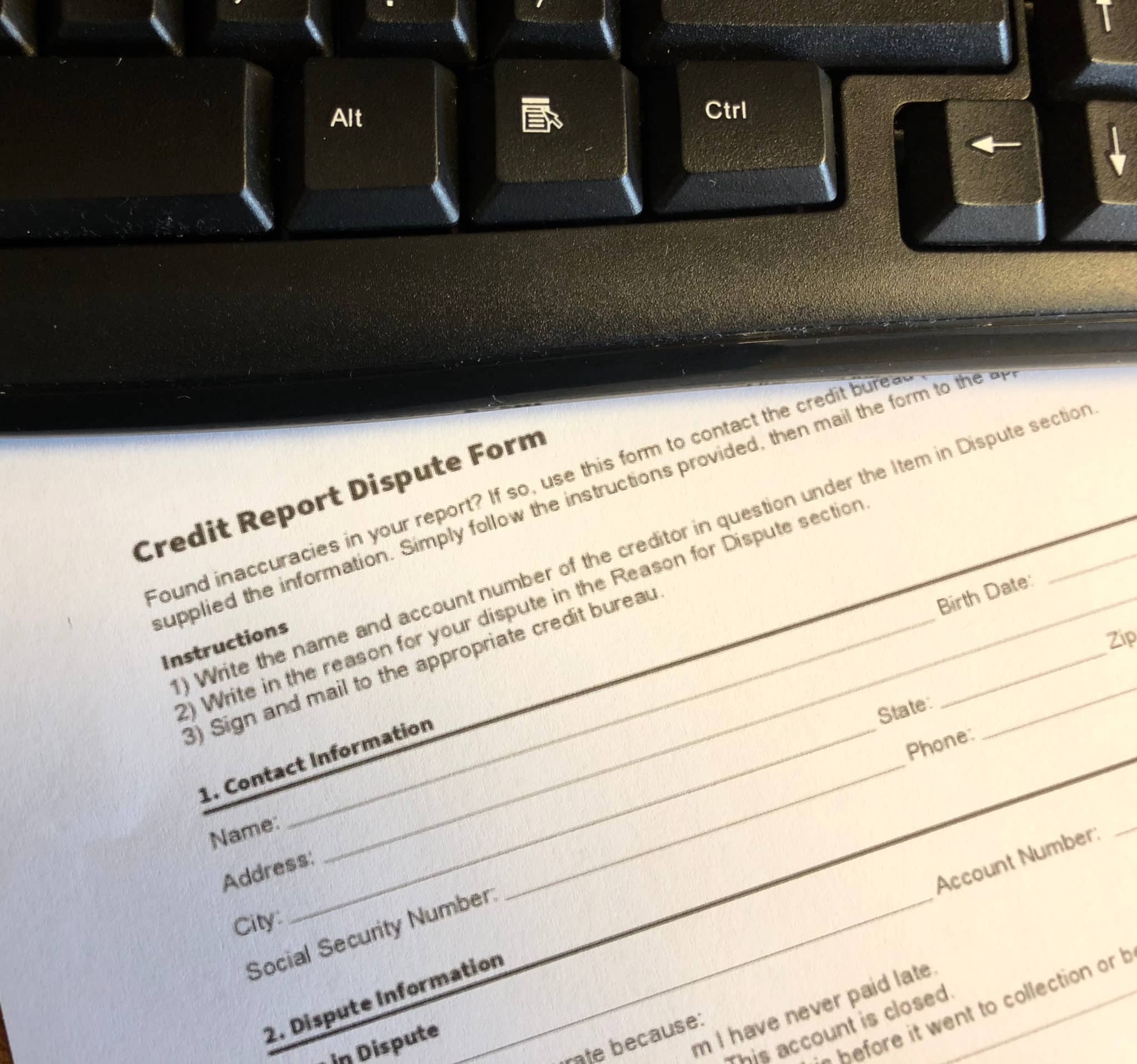Credit reporting agencies (CRAs) such as Experian, Equifax, and TransUnion wield a lot of power in the United States. According to the Consumer Financial Protection Bureau (CFPB), these CRAs report on more than 200 million adults each month, covering about 1.6 billion accounts.

Table of Contents
With that volume, it’s no surprise that mistakes happen. But, credit reporting errors are rarely harmless. California residents are better protected than those in many other states. For example:
- California law restricts the circumstances in which a prospective employer may use the applicant’s credit history in the decision-making process,
- California drivers don’t pay higher auto insurance rates based on poor credit histories as those in some other states do, and
- A bill is currently pending that would prohibit most landlords from using credit reports or asking questions about information contained in credit reports when renting residential property
Still, as of May of 2022, a mistaken entry on your credit report can mean:
- Denial of credit
- Higher interest rates and fees
- Difficulty renting an apartment
- Reduced access to certain employment opportunities
How Common are Credit Reporting Errors and Inaccuracies?
Between January 1 and September 30 of 2021, the CFPB received more than 500,000 consumer complaints about credit reporting agencies–up from 319,000 for the full year in 2020. That sounds like a lot, but it’s only a fraction of the number of disputes filed by consumers in a given year. The CFPB estimates that credit reporting agencies receive millions of disputes each year. And, disputes and complaints together make up only a fraction of the credit reporting errors that occur.
Back in 2012, the Federal Trade Commission (FTC) reported that 20% of U.S consumers had errors on their credit reports, and about 5% had errors serious enough to result in denial of credit or increased costs. To put those in perspective, 5% of credit reports means about 10 million U.S. consumers.
The situation hasn’t improved with time. In 2021, Consumer Reports asked thousands of people to check their credit reports and report their findings. 34% found errors on their reports. Most of these errors involved personal information, but 11% found that there were errors relating to account information. 15% of respondents who had accounts in forbearance discovered that those accounts were not being properly reported.
Just 57% of those who identified errors on their credit reports were able to get those errors resolved through the dispute process.
10% had difficulty accessing their credit reports, illustrating a loop credit reporting errors may cause. If there are mistakes on the credit report, including personal information such as addresses, consumers trying to monitor their credit histories may be locked out because they are unable to answer identity verification questions that are based on errors they don’t know about.
Not All Credit Reporting Inaccuracies are Mistakes
Many inaccurate entries on credit reports are errors, caused by outdated records or data entry mistakes or mixing of the credit files of people with similar names or some other glitch, oversight or carelessness. But, not every credit reporting problem is an innocent mistake.
Some creditors, debt collectors and debt buyers engage in shady behavior to put pressure on consumers. For example:
- The company furnishing information to the credit reporting agencies may “re-age” the debt to extend the time it appears on a consumer’s credit report,
- The company furnishing information to the credit reporting agencies may continue to report an open balance on an account that has been discharged in bankruptcy or is no longer legally due,
- An original creditor or debt buyer may sell a debt to another debt buyer without disclosing that the debt was discharged in bankruptcy, causing the debt to be re-reported as an open collection account, or
- A creditor or debt collector may re-submit information after the consumer successfully disputes the item
One reason some creditors and debt collectors engage in these manipulations is that it’s often easier for a consumer in a crunch to pay off a relatively small debt than take the time to dispute it–even if they never owed the debt, it was paid, it’s too old to be reported, or it’s uncollectible for some other reason.
Imagine, for example, that you want to purchase a new vehicle. You go into the dealership with your down payment ready, confident that your credit should be in good shape because you know your balances are low and your bills are paid on time.
To your surprise, the dealership submits your application and it’s denied, or they offer a higher interest rate than you expected. You dig deeper and discover that there are two open collection accounts on your credit report. One is for a utility bill from a place you lived a decade ago. It’s too old to appear on your credit report, and you’re pretty sure you paid it. But, you’re ready to make the purchase now.
Disputing the debt will take at least 30 days. And, the bill is just $200. If you’re like many consumers, you may make the payment simply to clear the record and keep your purchase moving forward. And, the debt buyer who reported the outdated debt gets a quick $200 for a debt they likely purchased for $25 or less.
Correcting Credit Reporting Errors
The Fair Credit Reporting Act (FCRA) provides a process for consumers to dispute items on their credit reports. Both the credit reporting agencies and those who furnish information to them are required to investigate disputes and make appropriate corrections. That may mean updating a balance or date, removing an item altogether, changing the status of an account, or something else.
However, both the CFPB report and the Consumer Reports survey revealed a common problem with the dispute investigation process: a combination of cursory review and reliance on an automated system that neither considers nor passes along all of the relevant information.

An expert tip from Erik
Consumers have always faced challenges when trying to get inaccurate information corrected or removed from their credit reports.
Sometimes, the credit reporting agencies fail to conduct a thorough investigation, leading them to the wrong conclusion. Sometimes, they fail to investigate at all. Other times, the credit reporting agency removes information, only to have the furnisher re-report it a few months later.
There’s no mechanism in place to check for this, so when you succeed in having an item removed from your credit report, you’ll want to continue to monitor your reports to make sure it doesn’t reappear. But automation has aggravated those issues.
e-OSCAR (Online Solution for Complete and Accurate Reporting)
One common obstacle many consumers face is the e-OSCAR system. In 2009, the National Consumer Law Center (NCLC) released a report on the pitfalls of the automated processing employed by credit reporting agencies. One problem they pointed to was the reliance on the e-OSCAR system to route disputes to those who furnish information to the credit reporting agencies. They reported that this system relied primarily on numerical codes, with little to no explanation. Often, supporting documents submitted by the consumer were not passed along with the short-handed dispute information.
Where humans interacted with the documents, the NCLC report revealed that they focused primarily on assigning codes, and did not examine documents, contact consumers, or exercise discretion. Furnisher “investigations” were at least as bad, consisting almost exclusively in checking the disputed information against the same computerized records they’d used to make the erroneous report.
In the decade following that report, new rules were implemented requiring furnishers to establish policies to ensure accuracy of the records they report. The Dodd-Frank Act granted the CFPB authority to oversee compliance with the FCRA. Several state Attorneys General reached a settlement with the three major credit bureaus–TransUnion, Equifax and Experian–requiring the credit reporting agencies to reform their processes to ensure greater accuracy.
Still, in 2019, NCLC issued an updated report that concluded that problems persisted. In fact, complaints about consumer credit reporting were increasing year by year.
Fighting Credit Reporting Inaccuracies
The dispute process set forth in the FCRA doesn’t always work the way it’s meant to. But, filing a dispute and getting a frustrating response–or no response at all–doesn’t have to be the end of the road. Some options for fixing your credit report include:
- Filing a complaint with the CFPB,
- Hiring an attorney and pursuing an FCRA lawsuit, which may result in a court order to fix your credit report and/or monetary damages, or
- If the debt was discharged in bankruptcy, you may be able to ask the bankruptcy court to sanction the creditor or debt collector that is reporting discharged debt
